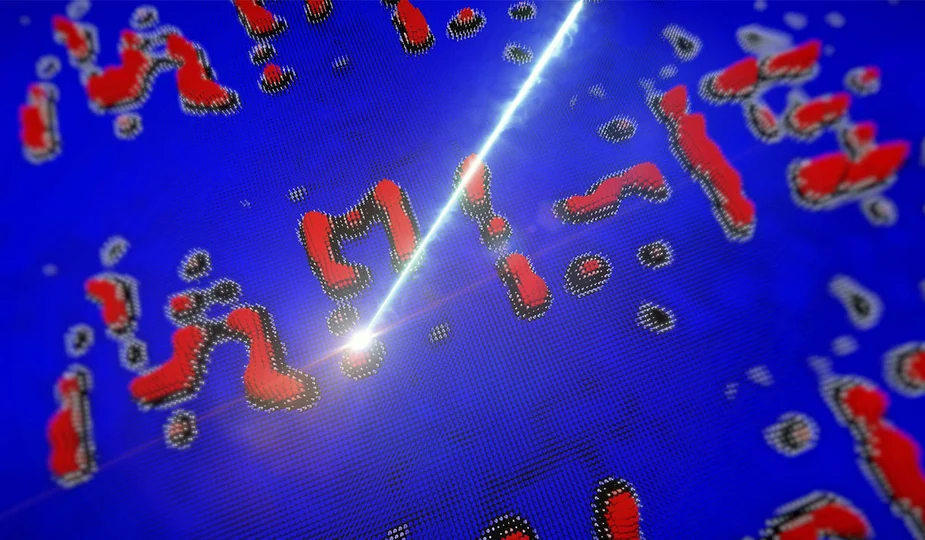New interaction between light and matter discovered at BESSY II
Discovery interesting for future information technologies
A German-Chinese team led by Gisela Schütz from the MPI for Intelligent Systems has discovered a new interaction between light and matter at BESSY II. They succeeded in creating nanometer-fine magnetic vortices in a magnetic layer. These are so-called skyrmions, and candidates for future information technologies.
Skyrmions are 100 nanometre small three-dimensional structures that occur in magnetic materials. They resemble small coils: atomic elementary magnets - so-called spins - which are arranged in closed vortex structures. Skyrmions are topologically protected, i.e. their shape is unchangeable, and are therefore considered energy-efficient data storage devices.
Soft x-rays at BESSY II
In a series of experiments on the MAXYMUS beamline of BESSY II, the researchers have now shown that a bundled soft X-ray beam with a diameter of less than 50 nanometres can generate a magnetic vortex of 100 nanometres. In order to make the skyrmions visible, the researchers use the MAXYMUS scanning transmission X-ray microscope. This is a high-resolution X-ray microscope, weighing 1.8 tons, located at BESSY II.
Serendipitous discovery
This discovery was made by chance, as this type of interaction between light and matter was previously completely unknown. "We don't know how light writes matter," says Dr. Joachim Gräfe, head of the research group Nanomagnonics and Magnetization Dynamics at MPI-IS. He is one of the main authors of the study, which was published in Nature communications in February. "We can describe certain properties phenomenologically. We know that it has to do with the X-ray beam. It's not just an energy input like heat that writes the Skyrmion. It's really a resonant effect: we can directly excite the atoms responsible for magnetism." This enabled him and his team to write "MPI-IS" (see figure).
Outlook: Future Spintronics
The results are particularly relevant for the development and production of so-called spintronic data carriers, which store information in skyrmions. They are considered to be energy-efficient and less susceptible to interference. However, this development can only take its course if skyrmions can be created precisely and with a perfect fit - and this has now become possible for the first time. "Our goal is for X-rays to serve as a tool for determining or writing the arrangement of magnetic structures in the future."
Contact:
Dr. Joachim Gräfe
MPI-IS
Department Modern Magnetic
Systemsgraefe(at)is.mpg.de
